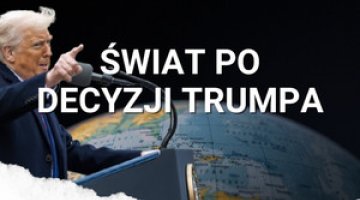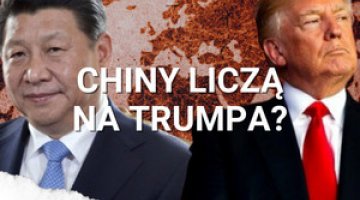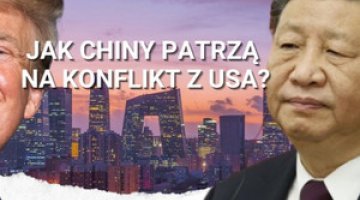China: moderate adjustments to the ‘zero COVID’ strategy
On 10 November, the Politburo Standing Committee (PSC) of the Central Committee of the Communist Party of China, the country’s most important party body, held a meeting whose topics included ‘optimising prevention and control measures to counter COVID-19’. The PSC reiterated the need for “the unwavering and dynamic implementation of the overall ‘zero COVID’ policy”, while stressing the need to ‘effectively coordinate epidemic prevention & control measures with moves shaping economic and social development, as required on the issues of countering epidemics, stabilising the economy and ensuring safe development”. The meeting noted that unknown variants of the coronavirus continue to emerge, the pandemic is not over, and new outbreaks are being detected in China all the time.
On 11 November, following a meeting of the state-run National Health Commission, a list of 20 measures was published which will include less restricted travel to and from the People’s Republic of China (PRC). The option of suspending international flights due to the detection of COVID-19 cases has been dropped. Only one negative PCR test result is required before crossing the border on outbound flights, and quarantine for visitors has been shortened from seven days at a hotel and three days at a residence to five and three days respectively. In addition, the tracking of secondary contacts (i.e. people who have come into contact with a person who was previously in contact with an infected person) has been abandoned; mass isolation of the population is being abandoned (it will be restricted to individual buildings or only parts of buildings, rather than entire housing estates); the rate of vaccination campaigns, particularly for the elderly, will increase; maps will be produced to help locate individuals and clusters of people at risk; and pandemic control in schools will be increased. Emphasis was also placed on the need for production facilities to continue working and for supply chains to remain uninterrupted. Point 16 enshrined a move away from the ‘one way for all’ principle, and stated that local party committees and authorities should take responsibility for pursuing effective pandemic policies that will not harm the activities of local people.
Commentary
- The PSC’s decisions are a reaction to mounting economic difficulties which have forced these moderate adjustments to the ‘zero COVID’ strategy (for more detail, see ‘China: the consequences of the ‘zero COVID’ strategy’). As a result of the wave of closures in cities and provinces during the wave of infections in the spring, China’s GDP fell by 2.6% in the second quarter of 2022 relative to the first. Beijing wants to prevent a potential outflow of foreign investment and a further shrinkage of exports (in October this year, their dollar value fell by 0.3% y-o-y). This is to be achieved by means including shortening the quarantine period for foreign travellers, primarily business representatives. During German Chancellor Olaf Scholz’s visit on 4 November, it was announced that China will make the Pfizer-BioNTech Covid-19 vaccine available to foreign expats. Significant emphasis was also placed on maintaining production in factories. Concerns about the drop-off in production have contributed to the decision to limit the extent of isolation in workplaces and residential areas where the SARS-CoV-2 virus has been detected. This is also intended to halt the decline in internal consumption and prevent losses in the service sector. Local authorities are also beginning to feel the direct costs of the ‘zero COVID’ strategy, including mass testing (which has been estimated to consume around 1.8% of GDP). There are increasing reports of a lack of funds to pay for such a large number of tests, or to pay medical staff and those overseeing isolation and quarantine. At the same time, local government revenues are falling due to the reduction in economic activity.
- The regulations introduced do not mark a departure from the ‘zero COVID’ policy, nor is there any indication that the CCP plans to fully reopen the country and return to the pre-pandemic travel regime any time soon. Despite the tough economic situation, Beijing cannot abandon its strategy for eliminating outbreaks, for both practical and political reasons. Although over 90% of the PRC’s population has been vaccinated, the vaccination campaign has hitherto been conducted with domestic vaccines of low efficacy, and the initial successes of the ‘zero COVID’ strategy mean that the population has not acquired collective immunity naturally. The low level of vaccination among the oldest (according to data from March, only 20% of those aged 80 or over had received two doses) makes them a high-risk group. Government estimates suggest that in the event of a loss of control over the pandemic, there could be a minimum of one million casualties among them.
- The ‘zero COVID’ strategy is one of General Secretary Xi Jinping’s signature policies. Withdrawing from it would mean admitting a mistake, and – due to the cult of personality that has been built up around him – this is not possible. As a result, Beijing is seeking to decentralise the political responsibility associated with its implementation. It is therefore forcing local authorities to act as early and decisively as possible to anticipate a massive spread of SARS-CoV-2. At the same time, however, they will bear the responsibility for the decline in economic activity in their regions, or for any protests over the ‘arbitrary’ isolation of the population. Should there be a nationwide surge in cases of the disease, then we should expect a return to the most restrictive elements of the ‘zero COVID’ strategy.




